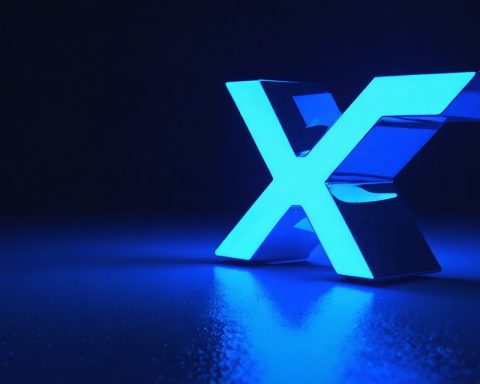- Nvidia’s GTC event spotlighted new AI chips, Blackwell Ultra and Vera Rubin, promising productivity and innovation, but seen by some as incremental.
- CEO Jensen Huang set an ambitious goal of $1 trillion in data center infrastructure revenue by 2028, reflecting Nvidia’s critical role in the tech landscape.
- Nvidia’s stock dipped over 3% post-event, as traders anticipated more immediate catalysts.
- New technologies like the Dynamo AI inferencing software and Quantum-X highlight Nvidia’s focus on optimizing data centers and AI innovations.
- Analysts uphold Nvidia’s market dominance but suggest it didn’t unveil the next significant breakthrough they expected.
- The company remains a leader in AI, balancing current leadership with the quest for future transformative advancements.
https://youtube.com/watch?v=UTwCgJK_Wzw
As the anticipation around Nvidia’s annual developer event crescendoed, all eyes were on CEO Jensen Huang, clad in his iconic black leather jacket, to unveil the chipmaker’s latest strides in artificial intelligence technology. The gathering, known as GTC, often serves as a bellwether for where the tech juggernaut is headed. Despite Huang’s enthusiastic presentation, the buzz on Wall Street indicates a mix of admiration for Nvidia’s achievements and a craving for groundbreaking advancements.
New AI chips, like the Blackwell Ultra and Vera Rubin, formed the centerpiece of Nvidia’s announcements. They symbolize the cutting edge of AI infrastructure, promising to catapult productivity and innovation to unprecedented levels. Yet, while the upgrades sound impressive, many analysts saw them as incremental—powerful, yes, but not the earth-shattering revelations some had eagerly anticipated.
Wall Street remains captivated by Huang’s ambitious forecast of reaching $1 trillion in data center infrastructure revenue by 2028. This staggering figure underscores Nvidia’s influential role in the accelerating tech landscape, as industries worldwide increasingly rely on AI and computing power. However, Nvidia’s stock took an unexpected dip post-event, declining by over 3% as traders sought more immediate and tangible catalysts.
Experts weighing in after the event maintain that Nvidia is on a robust path. The new Dynamo AI inferencing software, alongside the advanced co-packaged optical technologies Quantum-X and Spectrum-X, highlights the company’s focus on optimizing data centers and AI factories. Their commitment to an annual cadence of innovative hardware releases ensures Nvidia remains a vanguard in AI prowess.
Despite holding firm on their stock ratings, analysts express a unified sentiment: the keynote reinforced Nvidia’s dominance but did not reveal the next dream catalyst. Still, the market is acutely aware of Nvidia’s strategic positioning, with its new offerings set to drive increased compute intensity and heightened investment in data center technology—both key enablers of future AI revolutions.
The overarching takeaway is clear: Jensen Huang’s Nvidia continues to push the boundaries of technological advancement, reinforcing its leadership in the global AI race. Yet, as the stock market reflects, even stellar legacies face the relentless pressure of expectation. Nvidia’s prowess is undisputed, but its challenge remains to consistently redefine the possible, striking a delicate balance between maintaining leadership today and unveiling the transformative breakthroughs of tomorrow.
Nvidia’s GTC Unveiling: What Wall Street and Tech Enthusiasts Need to Know
Nvidia’s recent announcements at their annual GTC (GPU Technology Conference) have once again put the spotlight on their trajectory in the AI and technology arena. While the excitement around their new AI chips and ambitious revenue goals remains palpable, there are several facets of Nvidia’s strategy and its impact that warrant deeper exploration.
Understanding Nvidia’s Latest AI Innovations
1. Blackwell Ultra and Vera Rubin AI Chips
The focus of Nvidia’s latest showcase, the Blackwell Ultra and Vera Rubin chips, represent advanced design in AI infrastructure. While they promise significant boosts in productivity for AI applications, their reception as merely incremental rather than groundbreaking is noteworthy. These chips are essential for complex AI tasks, including natural language processing and deep learning applications, potentially setting new benchmarks in computational efficiency.
2. Dynamo AI Inferencing Software
Nvidia’s Dynamo software highlights efforts to enhance inferencing—the process of using trained AI models to make predictions or decisions. This will likely lead to faster deployment of AI solutions across industries, ensuring Nvidia remains integral to AI advancements. This software is crucial for real-time data processing and analytics, a growing need in sectors like healthcare, automotive, and finance.
3. Quantum-X and Spectrum-X Co-packaged Optical Technologies
These technologies underline Nvidia’s focus on advancing data center capabilities. By increasing data transfer speeds and reducing latency, they promise more efficient AI processing environments. This is particularly important as data centers become the backbone of modern computing and AI-driven services.
Market Forecasts and Industry Trends
Data Center Infrastructure Growth
Jensen Huang’s projection of $1 trillion in data center infrastructure revenue by 2028 positions Nvidia as a leader in this expanding market. Data centers are increasingly pivotal as the demand for cloud services and AI applications grow, and Nvidia’s continued investment signifies its recognition of these trends.
AI Hardware Releases
Nvidia’s strategy emphasizes a consistent schedule for new hardware, keeping pace with rapid technological demands and ensuring sustained market relevance. Staying ahead of competition involves not just introducing new products, but also maintaining compatibility and integration with evolving tech ecosystems.
Controversies and Limitations
Stock Dip and Market Reactions
The immediate dip in Nvidia’s stock post-GTC reveals market impatience for immediate groundbreaking innovations. This underscores a frequent market oversight: while incremental developments may not grab headlines, they steadily enhance technological foundations necessary for future leaps.
Anticipation of Breakthroughs
The tech world eagerly awaits the next transformative innovation. Nvidia’s challenge is balancing incremental upgrades with delivering the unexpected, revolutionary advancements.
Real-World Use Cases
AI in Autonomous Vehicles
These new chips and software are vital for Nvidia’s push in autonomous vehicle technology, where real-time data processing, decision making, and fast inferencing are critical.
Healthcare Diagnostics
In diagnostics, the ability to quickly and accurately process large datasets can revolutionize patient care protocols, with Nvidia’s infrastructure playing a central role in hospitals and research centers.
Actionable Recommendations
Staying Informed
For investors and tech enthusiasts, maintaining awareness of Nvidia’s product roadmaps and market strategy is crucial for anticipating shifts in the tech landscape. Following trends, such as the growth of AI in vertical industries, will offer valuable foresight into Nvidia’s ongoing impact.
Investment Strategies
Considering Nvidia’s consistent performance and strategic focus on AI and data centers, long-term investment strategies may offer more stability and potential rewards than short-term speculative plays.
For further insights and updates on Nvidia’s initiatives and broader tech trends, consider visiting Nvidia’s official website.
By staying attuned to Nvidia’s advancements, stakeholders can better navigate the complexities of AI technology and market reactions, preparing for both current transformations and future breakthroughs.

















